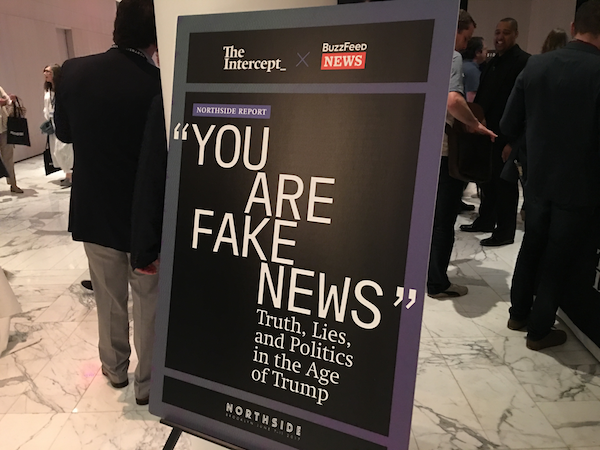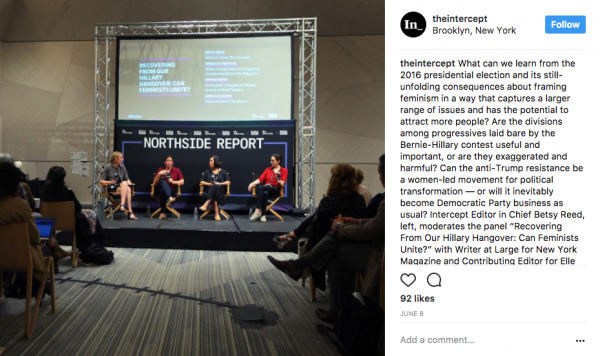Taking Engagement Online into Real Life: the Event Strategy Used by The Intercept

Audience engagement teams can sometimes forget that strengthening relationships with readers or crafting a tone can happen offline. The Intercept understands exactly this. Hosting Northside Report, they deepened their relationships with readers away from the screen and “IRL” (in-real-life).
“We want to create a complete experience for our audiences,” The Intercept’s Director of Communications Vivian Siu said. “I think there’s a lot to gain from human interactions.”
To bring this to life, The Intercept and Buzzfeed News collaborated on a program for Brooklyn’s Northside Festival. The event organizers, including Siu, viewed it as an extension of the already strong relationship that The Intercept has with its digital readers.
At the two-day long event, The Intercept brought the topics they cover online to life, and engaged their audience face-to-face. At the same time, they kept core readers online who weren’t at the event in mind.
“This event allowed readers to experience our journalism through different avenues,” Siu said. Here’s what audience engagement teams can learn from The Intercept’s event strategy.
Keeping readers’ interests first: Using popular site content to shape event programming
The Intercept framed programming for their Northside event to cover issues that are most important to their audiences. The Intercept uses data from Parse.ly to understand the topics and coverage areas that matter to their readers, and this helped shape the panels and discussions. Reporters, authors, entrepreneurs, and activists joined other experts — creating conversations on topics their readers expressed interest in like feminism, criminal justice reform and contextualizing Trump and Russia.

By fostering a dialogue, The Intercept got to know their most dedicated digital supporters offline. The event provided the chance for audiences to ask questions and interact directly with their favorite reporters about issues that concern them most.
Meeting readers where they are: Live-streaming event coverage on Facebook, Twitter, and Instagram
While they were building audiences IRL, The Intercept stayed plugged in. They took into consideration their digital audience who couldn’t attend the event by broadcasting in real-time through platforms like Facebook Live, live-tweeting panel discussions, and posting short videos on Instagram Stories throughout the day.

Allowing digital audiences to experience the event from wherever they are is in line with one of The Intercept’s missions: making their content accessible to everyone. They offered deeply discounted tickets to students and low-income individuals, and they provided funding so some event-goers didn’t incur travel and accommodation costs attending Northside.
“It’s really important to us to make our events accessible,” Siu said. “We want people of all backgrounds to be supporters and have access to our work that interests them.”
Beyond the event, their mission of inclusion allows people from all walks of life to become part of The Intercept’s membership program. Their membership method for winning audiences proved to be a hit: they got 1,000 members in the first 24 hours after its introduction, Siu said.
Thought-provoking events like Northside Report are a key feature of their membership program. Through this model, the Intercept gives their niche audiences a chance to participate in their work first-hand. So – looking for new ways make sure your work gets the impact it deserves? Consider events that empower your online engagement to be more effective by bringing it offline.